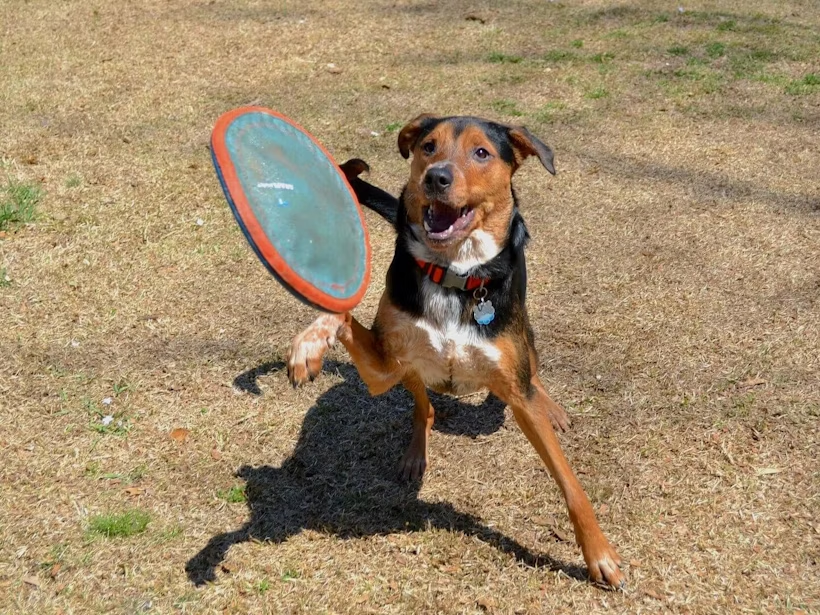Sheltering in place and social distancing are smart ways to help slow the spread of COVID-19. But being cooped up at home comes with unpleasant side effects, including boredom and restlessness.
Robbed of trips to the park and play dates, your pup is likely feeling the quarantine blues, too. And that can be a problem, because stir-crazy dogs often direct their energy into destructive activities, such as chewing baseboards and digging up flower beds.
Fortunately, being stuck at home with your fur child has a few perks. Of note, you get more opportunities to bond (which brings many health benefits).
To help you do just that, here are seven games you can play with your dog at home. We’ve also included tips about breed tendencies, so you can find the perfect way to entertain your pup.
Pro tip: Don’t know what your dog’s breed mix is? Find out with a dog DNA test —a good bonding activity itself!
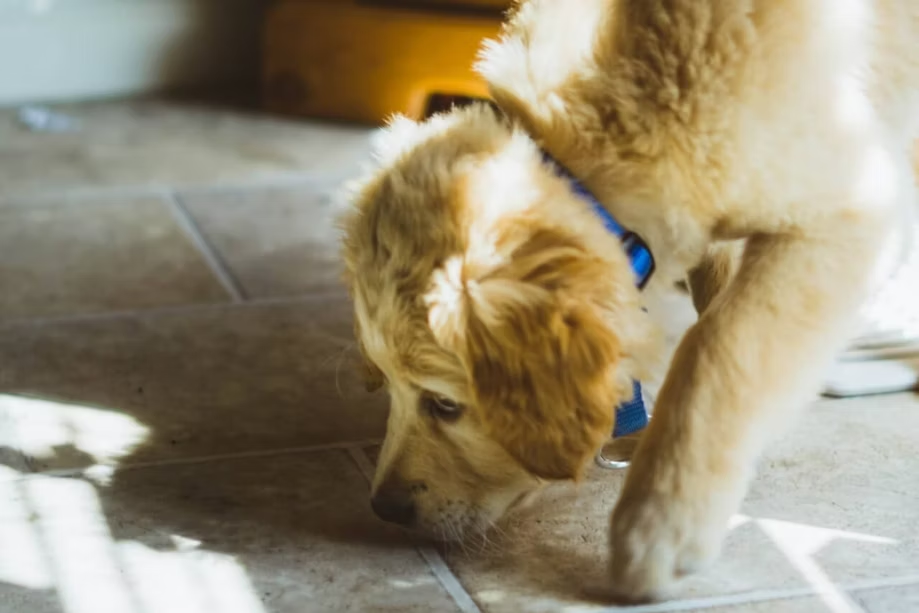
1. Treasure hunt
Hiding treats around your house is an easy way to engage your dog’s talented nose. Though hounds, such as Beagles, Treeing Walkers and Bassets, may immediately come to mind as breeds that love scent work, nearly any breed or mix may enjoy it.
Plus, some people feel that—because the sense of smell is so important to dogs—games involving scent may boost confidence in anxious dogs by helping them feel successful as they focus on a healthy instinct.
The rules of the treasure hunt game are pretty straightforward:
- Have your pup stay, or have someone distract them, if necessary.
- Hide smelly treats around your house. At first, you may need to “hide” the treats in relatively conspicuous places or even show your dog where they are. (Optional: You may wish to use a designated set of shoe boxes or other easy-to-open containers to cue to your dog it’s game time.)
- When you’re finished hiding, release the hound!
- Once your dog finds a treat, be sure to give praise and celebrate the achievement. This will motivate them and make the activity even more rewarding.
- With time, you may vary the number of treats, boxes and difficulty and ask your dog, “Have you found them all?” to keep them busy.
Treasure hunting is a simplified version of a professional canine sport called nosework. The topic is too big to cover here, but if you’re interested in learning more, here’s a good overview.
2. Frozen, food-filled toy
Admittedly, this isn’t really a game to play with your dog so much as it is a low-effort way to keep your pup preoccupied and mentally stimulated (which can be great if you’re trying to get work done without distraction).
Here’s what we recommend: Fill a Kong® or similar toy with peanut butter and drop it in your freezer. Once frozen, you’ll have an appetizing, long-lasting treat that will hold your dog’s attention for hours. This is especially effective for food-motivated breeds, such as Labrador Retriever, Dachshunds and Pugs.
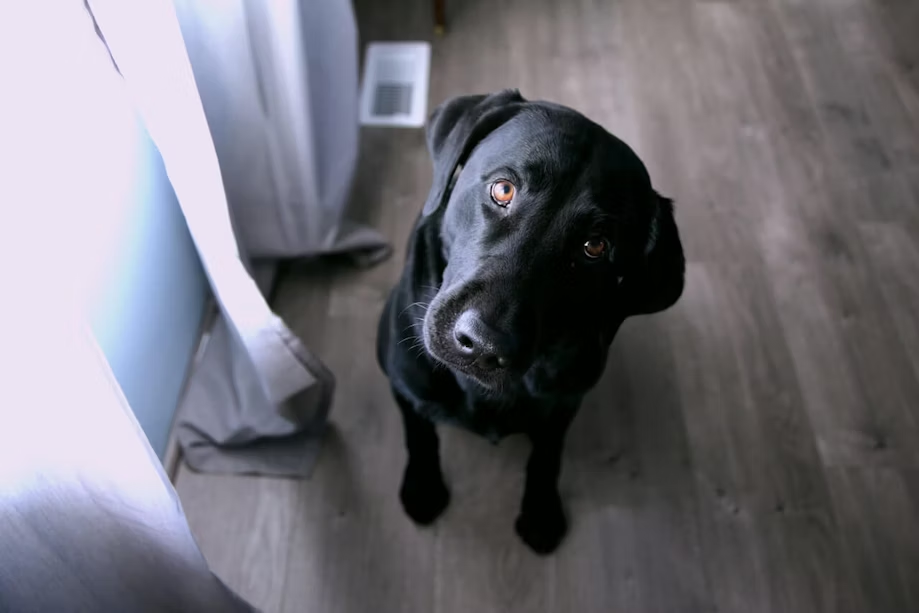
3. Hide-and-seek
Remember the treasure hunt game? Well, this is the same—except a person is the prize! This is how it works:
- Tell your dog to stay.
- Go find a hiding spot for yourself or another family member.
- Once hidden, call or release your dog and wait for them to sniff you out.
- When your dog finds you, give lots of love to let them know they did a good job.
This is another good game to play with dogs that have sharp senses. And just like treat-hunting, hide-and-seek should mentally exhaust your pup after a few rounds.
Pro tip: For added fun, you can measure how much activity your pup is getting with Whistle, a pet health and location tracker.
4. Chase
The game of chase is exactly what it sounds like: You get your dog to chase something! Two common tools for this game are a flirt pole and a laser pointer.
If you’ve never heard of a flirt pole or flirt stick, imagine a fishing pole with a dog toy in place of the hook. You can buy flirt poles, but they’re also fairly simple and inexpensive to make yourself. All you need is a pole (e.g., bamboo stick, PVC pipe, broom handle), some sturdy string or rope, and a lure (e.g., a soft toy, rag).
By swinging and bouncing the lure, you’ll make it move like a small animal. That will entice your pup to take chase and provide a good workout—even if you’re indoors or in a small backyard. You can achieve the same results with a laser pointer by shining it where your dog can see and then keeping it just out of their paw’s reach.
As you might expect, chase is a perfect game to play with dogs that possess a strong prey or chase drive, such as terriers. But because this can be a high-impact activity, we don’t recommend it for dogs that are overweight, have joint problems or are otherwise unhealthy.
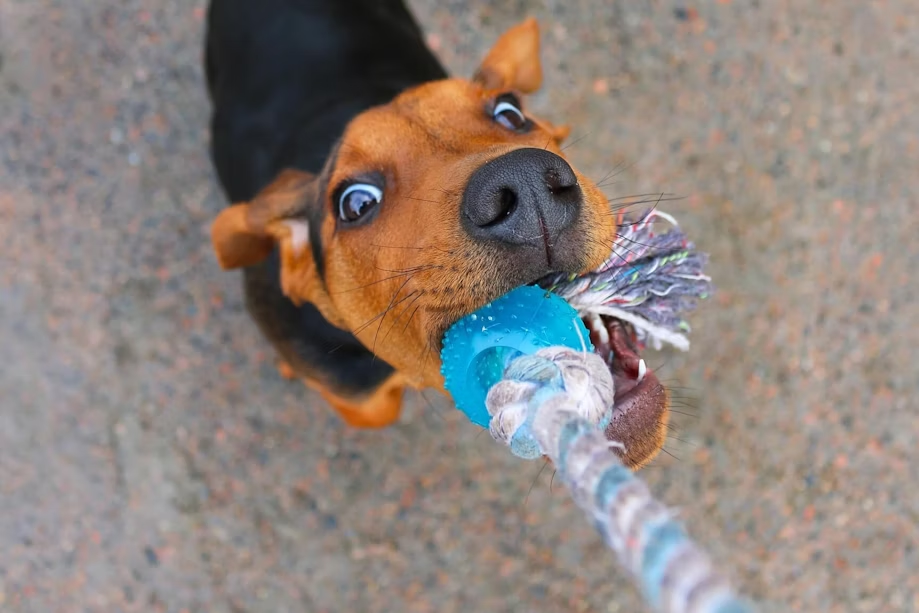
5. Tug-of-war
When it comes to games to play with your dog, tug-of-war probably doesn’t need much of an explanation. But it may benefit from myth-busting considering that some people believe tug-of-war encourages aggression and dominant behavior in dogs.
Fortunately, experts say otherwise. In fact, the game may actually help reduce aggression by creating a positive, controlled outlet for excess energy.
That being said, we recommend the following best practices to ensure a safe, enjoyable experience for everyone:
- Teach your dog a “release” command (e.g., drop it) so that you’ll be able to stop the game when necessary.
- Never play tug-of-war with hard or sharp objects, such as sticks. Instead, try a knotted towel, rope or (best of all) a toy designed for tug-of-war.
- Stop playing immediately if teeth-to-skin contact occurs or if the game simply becomes too intense. Play-growling is normal, but you should watch for other signs that things are getting serious (e.g., tail stops wagging).
- Play tug-of-war with mature dogs only—younger dogs may still have puppy teeth and not yet fully developed bones and joints.
- Let your dog win sometimes! This can be great for boosting the confidence of insecure dogs and makes the game more fun for your pup.
Tug-of-war is a great way to build the human-canine bond, regardless of your dog’s breed. But because the game is both physically and mentally demanding, it can be particularly handy for tiring out hyper dogs—including Border Collies, Siberian Huskies, Poodles, Australian Shepherds, and American Staffordshire Terriers.
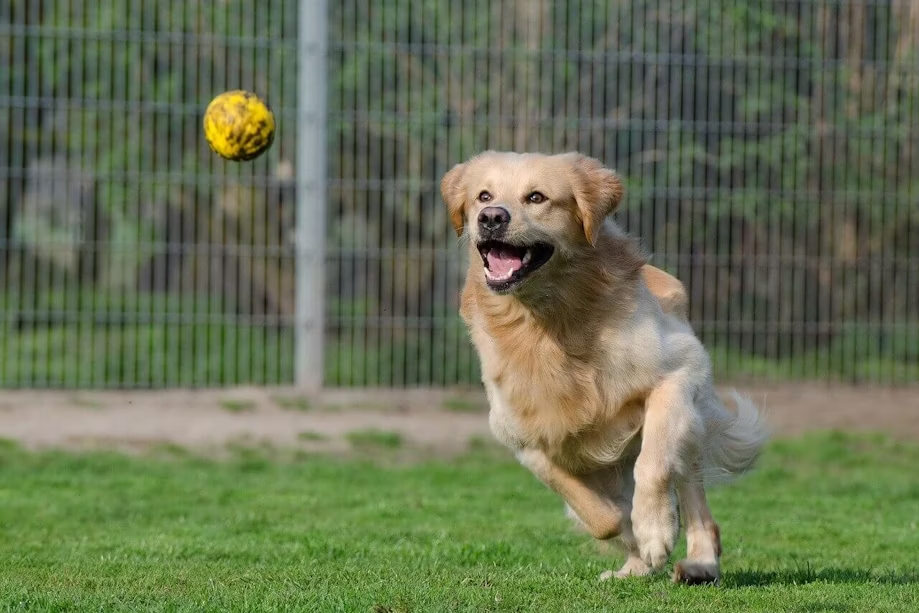
6. Fetch
As with tug-of-war, this game needs no introduction.
All dogs can learn to love the game of fetch. But certain breeds possess a natural obsession and talent for it. These include those belonging to the sighthound, terrier, sporting and herding groups. More specifically, Border Collies, Australian Shepherds and retriever breeds (go figure) are known for their exceptional fetching skills.
We recommend using a toy designed for fetch because many “fetchable” objects—including tennis balls, sticks and frisbees—can damage your dog’s teeth.
7. Free shaping
Free shaping is the gradual process of teaching your dog to perform complicated or new behaviors on command—such as giving high-fives, using a doggy door or even retrieving a beverage from the fridge (seriously).
In free shaping, you “shape” a goal behavior by progressively marking and rewarding other behaviors as they approach the desired one. It essentially works like this: Wait for your dog to offer a relevant behavior and, when they do, reward them with a small, high-value treat. It’s really that simple.
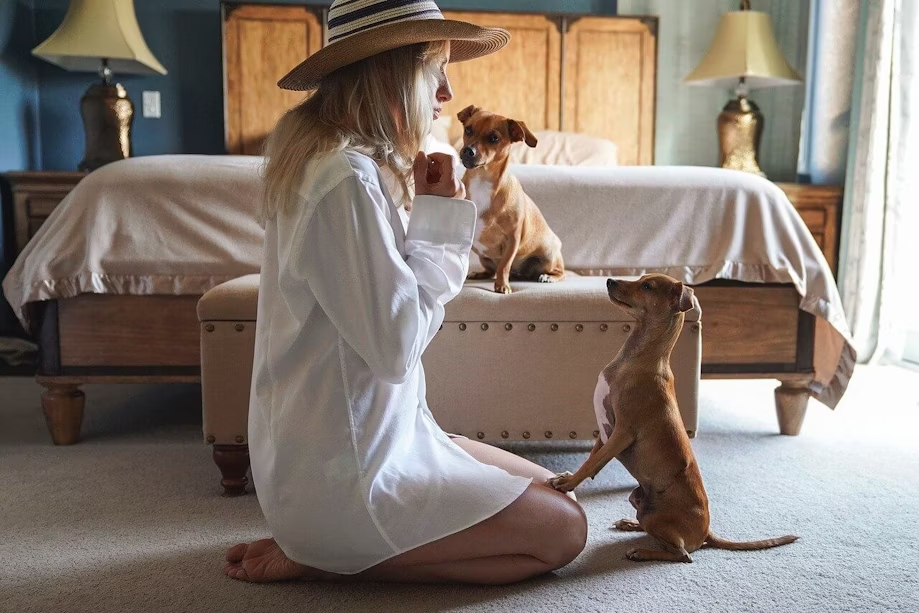
What is marking, you ask?
You mark behaviors with a specific, unique and consistent word or sound such as “yes!” Alternatively, you may use a clicker. Trainers often use and recommend the latter, as they’re fast and consistent (so you’re less likely to confuse your pup). You can find these inexpensive tools at nearly any pet store.
When teaching your dog clicker training or free shaping, you should first associate the click (or your chosen word) with a treat or other reward. This process is known as “charging the clicker.”
To ensure your dog understands the cause and effect quickly, it’s important to click and treat in short succession. So, make sure to have lots of small, tasty treats ready before beginning!
Once your dog makes the connection (it may take a few separate sessions), they’ll start trying anything they can think of to get the next treat. And that’s how you build up to your chosen goal behavior.
However, the secret to success is to start small.
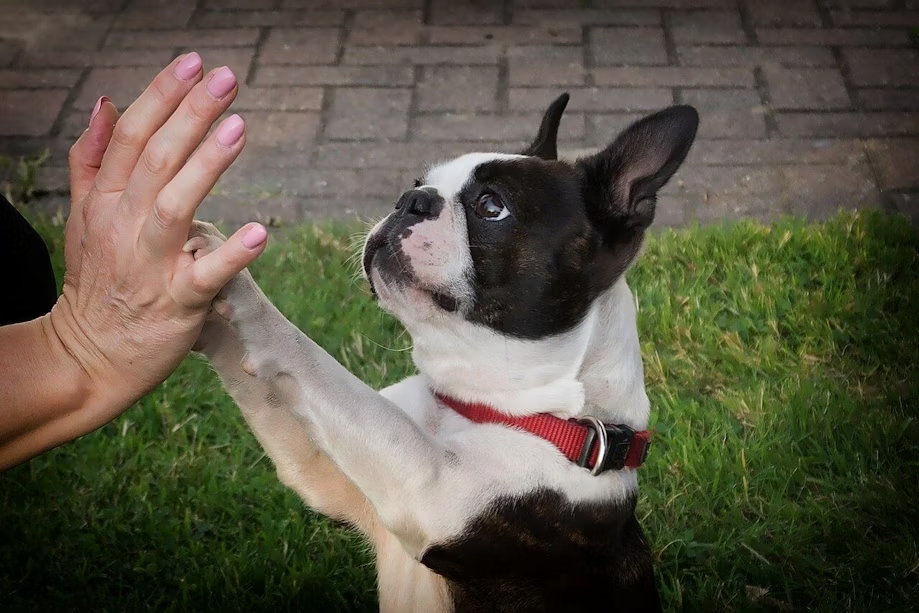
For example, if you want to train your dog to give high-fives on command, the first behavior to mark could be your dog looking at your palm. So, each time they look at your palm, you mark the behavior with a click and give a treat.
Once your pup has that routine down, you can withhold the treat until they make incremental progress—maybe they sniff or lick your hand—in attempts to get the treat.
After repeating and building upon this process for a while, your pup will eventually (and probably out of desperation or frustration) chance upon the behavior you’re really wanting: a high-five. As soon as that happens, be sure to give lots of praise and repeat the exercise to reinforce the behavior.
When your dog has a good grasp of the trick, you can begin naming it by saying the command just before your physical prompt or lure. Eventually, your dog should be able to perform the action on command.
Shaping will drain your pup’s mental energy. So, remember to stay positive, go slow and take breaks. You want to end the activity just before it stops being fun or interesting so that your dog will always be eager for the next session. For some dogs, this may mean sessions last only a few minutes—and that’s fine, as long as you end on a high note.
A wonderful activity for dogs of all breeds, free shaping is a vast, interesting subject and well-deserving of its own series of blog posts. But in the meantime, check out this guide from the AKC for more tips and inspiration.
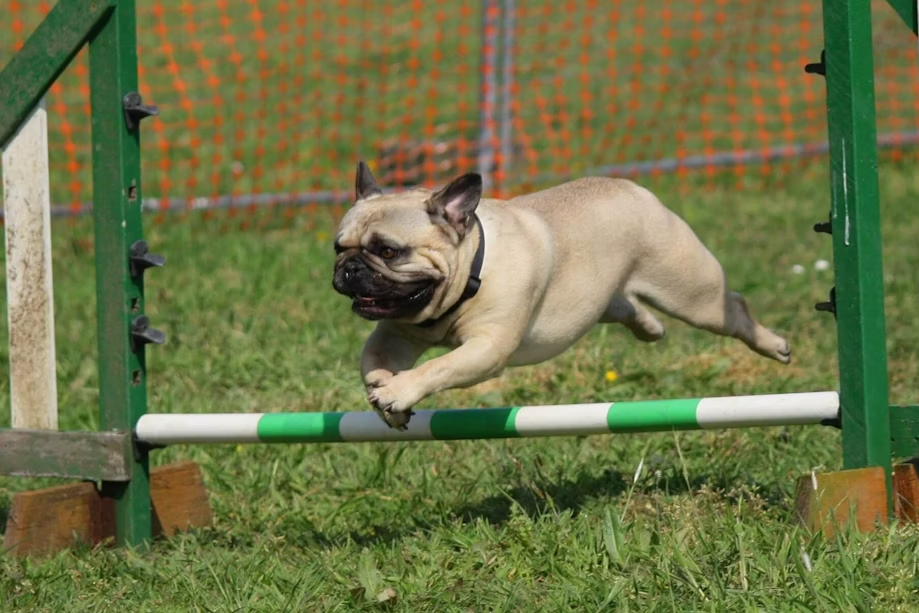
Bonus: Obstacle course
If you’re really bored, take things up a notch by designing an obstacle course for your canine. You can set up simple household items, such as chairs, boxes and hula hoops, and train your pup to navigate them like a search and rescue dog. (But safety first! Never do anything that would endanger your doggo.)
In addition to burning mental and physical energy, tackling an obstacle course will build your dog’s agility.
